In recent years, the concept of biophilic design has garnered significant attention, particularly as the world shifts towards more sustainable and eco-friendly solutions in architecture and interior design. This innovative approach centers on the idea that integrating nature into our living spaces can enhance our well-being, increase productivity, and reduce stress. Whether you're designing a cozy home office or planning an entire building layout, biophilic design is an essential component in fostering harmony between humans and the natural environment. This article delves into what biophilic design truly means, its key principles, and how it influences choices in furniture like tree bookshelves, materials like solid wood, and sustainable practices such as using reclaimed wood.
What is Biophilic Design?
Biophilic design stems from the term "biophilia," which means the innate human tendency to seek connections with nature. The concept of biophilic design aims to bridge the gap between the built environment and the natural world by incorporating elements such as plants, natural lighting, fresh air, and organic materials into indoor spaces.

The objective is not simply to beautify a space but to create environments that promote mental and physical well-being. Studies have shown that biophilic spaces help reduce stress, improve focus, and even increase creativity. As people spend the majority of their time indoors, biophilic design provides a much-needed connection to nature, which has profound positive effects on overall well-being.
Core Principles of Biophilic Design
The core of biophilic design can be broken down into several key principles:
1. Natural Light: Incorporating large windows or skylights that allow natural light to flow freely into a space is central to biophilic design. This not only illuminates the area but also creates a direct connection to the outside world.
2. Organic Materials: Using natural materials like solid wood, stone, and other organic textures creates a tactile connection to nature. Materials that age beautifully, such as reclaimed wood, are often preferred for their sustainability and rustic appeal.
3. Greenery: Plants play a vital role in biophilic design. Whether it’s a potted plant or a green wall, incorporating greenery helps purify the air, add a calming aesthetic, and create a sense of outdoor tranquility indoors.
4. Water Elements: Water features like fountains or aquariums bring a soothing presence into a space, providing auditory and visual stimuli that remind us of natural environments.
5. Natural Shapes and Patterns: Biophilic design incorporates organic shapes and patterns, inspired by natural forms. Whether it’s the curves of a tree bookshelf or the veins in a leaf-like wall art, these patterns resonate with our biological instincts.
6. Views and Vistas: Offering expansive views of outdoor landscapes or framed views of greenery through windows helps establish a visual connection with nature.
7. Textures and Layers: By using textures like untreated wood, stone, or fabrics like cotton and wool, biophilic design encourages touch and engagement with natural elements.
Tree Bookshelves: An Icon of Biophilic Design
One of the most visually striking furniture pieces that encapsulate biophilic design is the tree bookshelf. Not only does it serve as a functional storage solution, but it also introduces an organic form into your space, mimicking the shape and structure of a tree. A tree bookshelf provides a creative yet natural way to display books, plants, and other decorative items. These shelves not only evoke the beauty of nature but also act as a unique piece of functional art that complements the biophilic design concept.

The tree bookshelf offers more than just aesthetic appeal. By choosing materials such as solid wood or reclaimed wood, you’re also contributing to the sustainability aspect of biophilic design. Wood as a material has an intrinsic warmth and natural beauty that synthetic materials lack, making it ideal for creating a comfortable and welcoming environment. When the wood used is reclaimed or sustainably sourced, it further emphasizes the eco-conscious aspect of biophilic design.
Solid Wood: The Heart of Natural Design
Solid wood has always been a favorite material in furniture making, and it's particularly important in biophilic design. This is because solid wood possesses a timeless quality, a natural aesthetic, and a tactile appeal that synthetic alternatives simply cannot replicate. Whether it's used in flooring, furniture, or decor, solid wood brings a piece of nature directly into the home.

One of the key benefits of using solid wood in biophilic design is its ability to connect us to the environment on multiple sensory levels. It’s visually appealing with its varied grains and patterns, and it offers a rich texture that invites touch. In addition, solid wood has the ability to regulate humidity by absorbing and releasing moisture, which can make your living space feel more balanced and comfortable.
A tree bookshelf made from solid wood enhances the biophilic atmosphere of a room. Whether left in its natural finish or treated with a non-toxic, eco-friendly varnish, it serves as a reminder of the craftsmanship and sustainability that biophilic design promotes.
Reclaimed Wood: Sustainability Meets Style
The use of reclaimed wood is a growing trend within biophilic design, and for good reason. Reclaimed wood not only gives a second life to materials that might otherwise go to waste, but it also offers unique character and history that newly harvested wood cannot provide.

Each piece of reclaimed wood carries with it a story—perhaps it once supported the roof of a barn or formed the floor of a centuries-old building. This gives it an authenticity and texture that can’t be replicated in modern, mass-produced materials. Its imperfections, such as nail holes, knots, and patina, contribute to the uniqueness of each piece, making it a perfect fit for those who want their furniture to reflect a connection to the past and to nature.
Incorporating reclaimed wood into a tree bookshelf or other pieces of furniture aligns beautifully with the principles of biophilic design. Not only does it reduce the demand for new lumber, but it also helps lower the environmental impact of deforestation. As a bonus, reclaimed wood often has a more rustic and weathered appearance, which adds to the natural aesthetic of a biophilic space.
Why Biophilic Design Matters in Modern Living Spaces
In an increasingly urbanized world, the need for biophilic design has never been more apparent. The human disconnection from nature, often referred to as "nature deficit disorder," can have negative effects on mental and physical health. Biophilic design seeks to combat these effects by incorporating elements of the natural world into our everyday environments, from homes and offices to public spaces.

For homeowners, biophilic design offers an opportunity to create living spaces that feel more connected to the outdoors, even if they reside in an apartment or urban setting. Simple changes such as incorporating a tree bookshelf made from solid wood, adding potted plants, or utilizing reclaimed wood for furniture and flooring can dramatically transform the feel of a room. It’s not just about aesthetics; it’s about creating an environment where you feel more relaxed, focused, and in tune with the natural world.
SpryInterior: Biophilic Design in Action
For those looking to integrate biophilic principles into their homes, brands like SpryInterior are leading the way in offering sustainable, nature-inspired furniture. SpryInterior emphasizes high-quality craftsmanship using natural materials like solid wood and reclaimed wood to create unique, customizable pieces that align with the biophilic design ethos. Their tree bookshelves, floating shelves, and other wood-based furniture items serve as perfect examples of how nature can be seamlessly integrated into modern interiors.

In addition to offering sustainable products, SpryInterior supports eco-friendly practices by providing free shipping and a 30-day return policy, ensuring that customers receive products that not only beautify their homes but also contribute to a more sustainable future.
Conclusion
Biophilic design is more than just a trend; it's a movement that reflects our growing desire to reconnect with nature in a world that's becoming increasingly disconnected from it. Through thoughtful incorporation of natural elements like tree bookshelves, solid wood, and reclaimed wood, biophilic design allows us to create spaces that nurture both our physical and emotional well-being.
As you plan your next home renovation or furniture purchase, consider how biophilic design can bring harmony and balance to your living spaces. And if you're looking for inspiration, brands like SpryInterior are there to help you embrace nature in your home with their range of sustainably crafted, nature-inspired furniture.


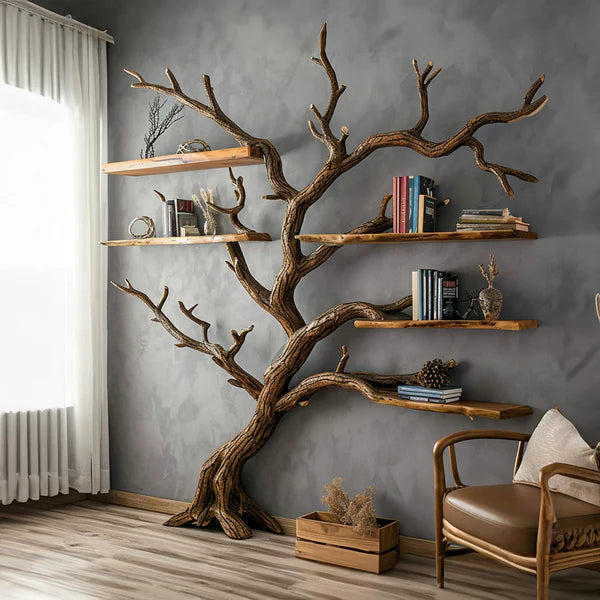
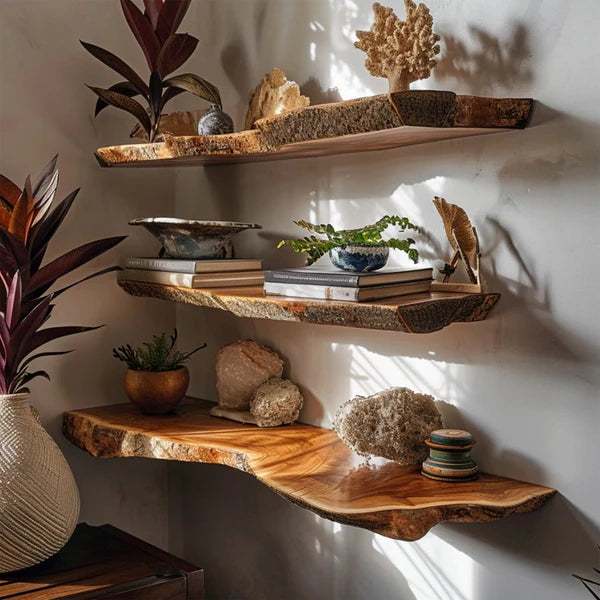
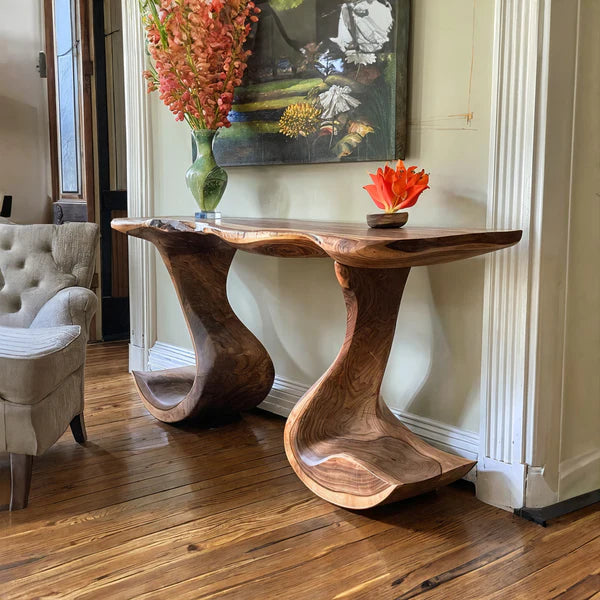
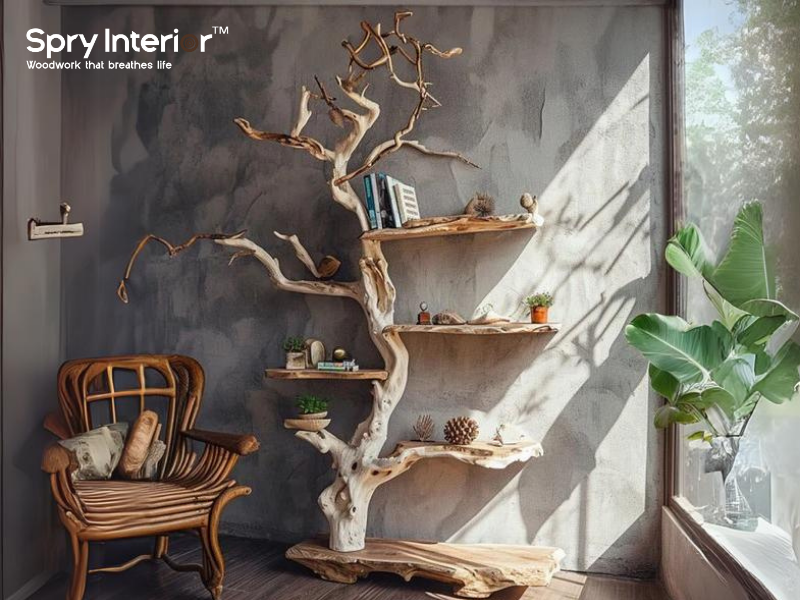

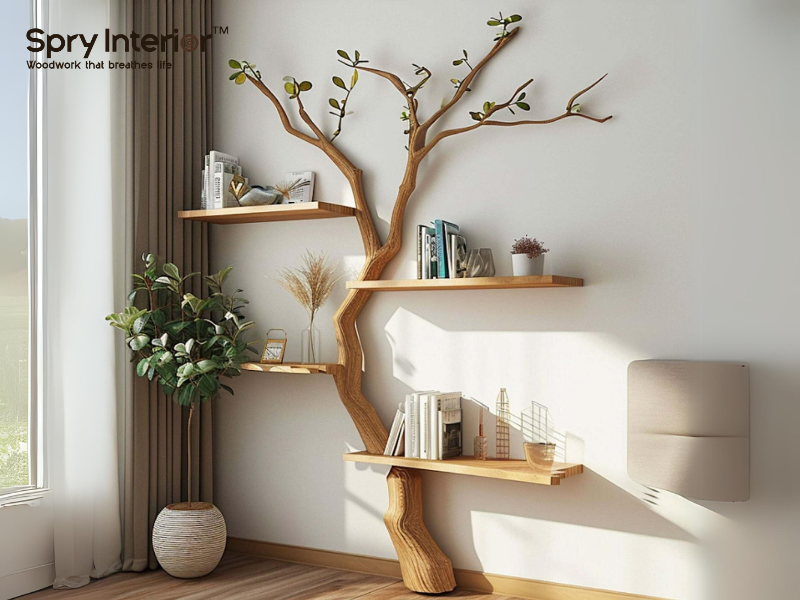
Leave a comment
This site is protected by hCaptcha and the hCaptcha Privacy Policy and Terms of Service apply.